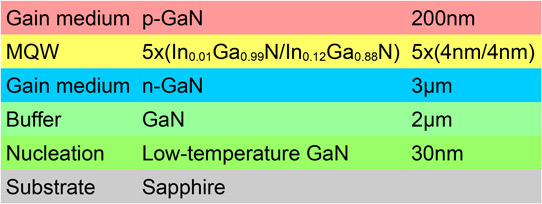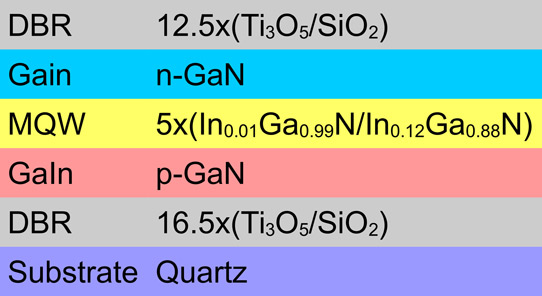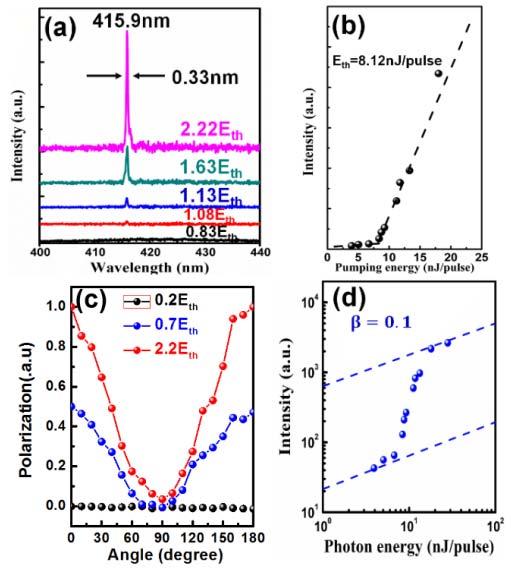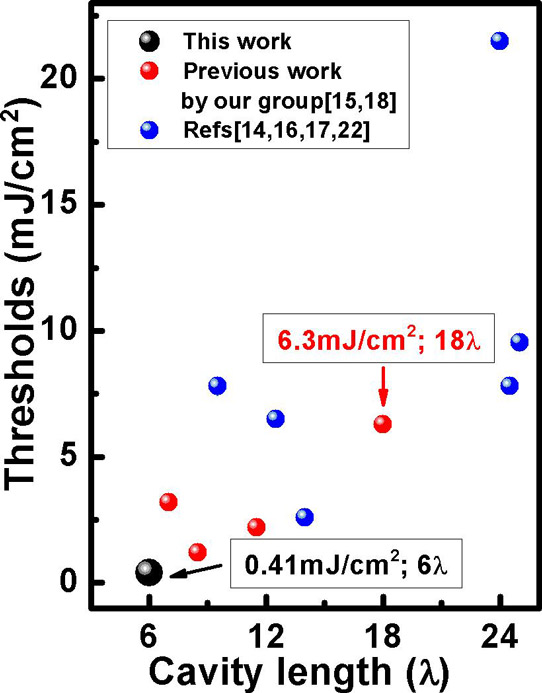- News
15 May 2018
Lowering thresholds for III-nitride vertical-cavity surface emitting lasers
Xiamen University in China claims the lowest threshold energy density so far reported for an optically pumped vertical-cavity surface-emitting laser (VCSEL) based on indium gallium nitride (InGaN) technology [Jin-Zhao Wu et al, IEEE Transactions on Electron Devices, published online 26 April 2018]. The ultra-low 413μJ/cm2 threshold was enabled by using a very short cavity, the knock-on effects of which included lower optical losses and higher gain. The team hopes its work will help guide III-nitride VCSEL improvements in the future.

Figure 1: Epitaxial structure.
Metal-organic chemical vapor deposition (MOCVD) on sapphire created a laser structure with a multiple quantum well (MQW) active layer (Figure 1). A 16.5-period titanium oxide/silicon dioxide (Ti3O5/SiO2) distributed Bragg reflector (DBR) was electron-beam evaporated before flipping the structure and bonding to a quartz substrate. This bottom DBR had a 99.9% reflectivity.

Figure 2: VCSEL structure.
A lift-off process with 248nm excimer laser light removed the sapphire substrate. The cavity was then tuned to six wavelengths with “cautious” inductively coupled plasma etching and chemical mechanical polishing, giving a smooth surface with 0.1nm root-mean-square roughness. The structure was completed with 12.5-pairs of Ti3O5/SiO2 for the top DBR. The MQW was placed at the antinode of the standing wave in the laser cavity to increase coupling with the gain medium (~1.7x enhancement).

Figure 3: (a) Emission spectra dependence on pumping energy. (b) Emission intensity as function of pumping energy. (c) Polarization characterization on pumping energy. (d) Spontaneous emission factor.
The excitation consisted of 355nm-wavelength light from a neodymium-doped yttrium aluminum garnet (Nd:YAG) laser focused on a 50μm-diameter spot The very short 6-wavelength cavity enabled a low laser threshold power density of 413μJ/cm2 (8.12nJ/pulse, Figure 3). The wavelength was 415.9nm.
The researchers report that a previous 18-wavelength device had a 15x higher threshold of 6.3mJ/cm2 (compared with 0.413mJ/cm2 = 413μJ/cm2, Figure 4). The researchers also estimate that the spontaneous emission factor increased by a factor of 7.7. They also calculate that the short-cavity gain was enhanced 3x and the round-trip optical absorption reduced 3x.

Figure 4: Statistics of thresholds of optical injection VCSEL.
The polarization degree of the laser light was 91% at 2.2x threshold excitation.
https://doi.org/10.1109/TED.2018.2825992
The author Mike Cooke is a freelance technology journalist who has worked in the semiconductor and advanced technology sectors since 1997.


